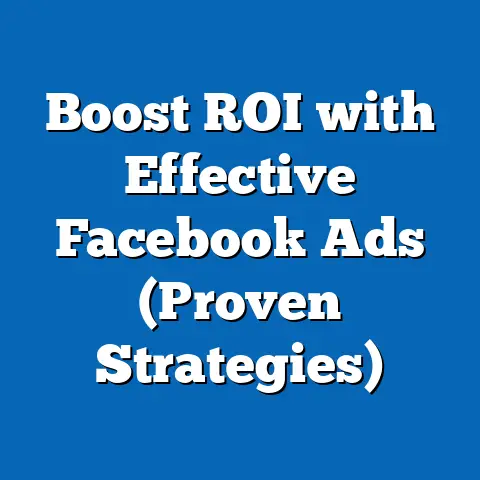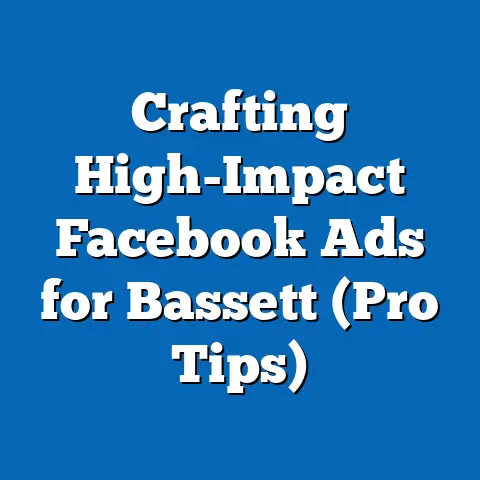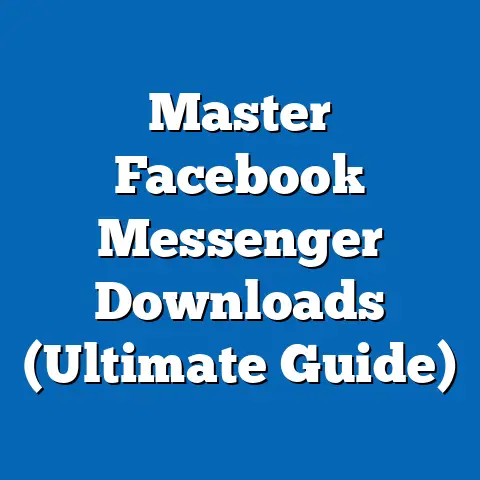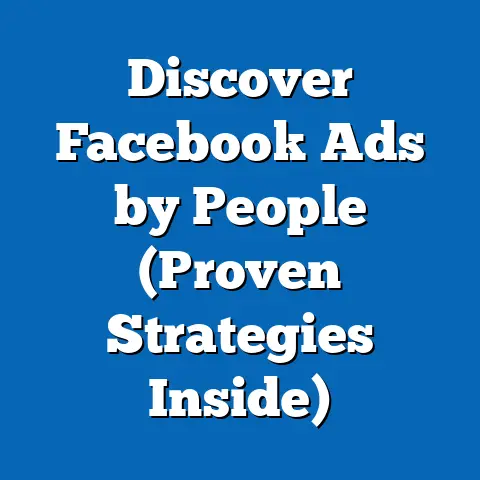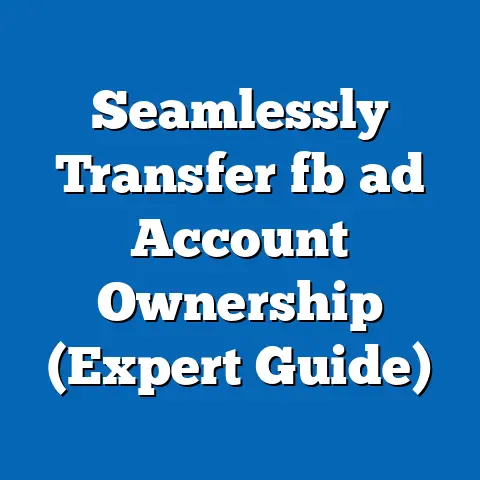Maximize Bookings with Cloudbeds Facebook Ads (Pro Tips)
The hospitality industry is a dynamic and competitive landscape, constantly evolving with new technologies and marketing strategies. I’ve seen firsthand how the shift towards digital marketing has transformed the way accommodations attract and retain guests. Today, a significant portion of bookings originates online, with social media platforms like Facebook playing a crucial role. In fact, recent statistics show that over 70% of travelers use social media for travel inspiration, and targeted advertising on platforms like Facebook can dramatically increase online bookings.
As a digital marketing specialist, I’ve worked with numerous hotels, vacation rentals, and B&Bs, and I’ve witnessed the power of combining robust property management systems with effective Facebook advertising. That’s where Cloudbeds comes in. Cloudbeds isn’t just a property management system; it’s a comprehensive platform that, when coupled with strategic Facebook Ads, can create a powerful booking engine. This article will explore how you can leverage Cloudbeds and Facebook Ads to maximize your bookings, attract the right guests, and boost your bottom line.
Understanding Cloudbeds and Its Role in Hospitality Marketing
Cloudbeds is a leading hospitality management software designed to streamline operations and enhance the guest experience for accommodation providers of all sizes. I remember when I first started working with a small boutique hotel that was struggling to manage their bookings and guest communications. They were using spreadsheets and multiple disparate systems, which led to errors, double bookings, and frustrated staff. Implementing Cloudbeds was a game-changer.
Key Features and Benefits of Cloudbeds
Cloudbeds offers a range of features that can significantly improve your business operations:
- Property Management System (PMS): This is the core of Cloudbeds, allowing you to manage reservations, availability, and guest information in one centralized location. This eliminates the risk of double bookings and ensures that your staff has access to the most up-to-date information.
- Channel Manager: The Channel Manager automatically updates your availability and rates across multiple online travel agencies (OTAs) like Booking.com, Expedia, and Airbnb. This saves you time and ensures that you’re always maximizing your occupancy rates.
- Booking Engine: Cloudbeds provides a customizable booking engine that you can embed on your website. This allows guests to book directly with you, avoiding OTA commissions and giving you more control over the booking process.
- Revenue Management Tools: These tools help you analyze your pricing and occupancy data to optimize your rates and maximize your revenue.
- Reporting and Analytics: Cloudbeds provides comprehensive reports and analytics that give you insights into your business performance. You can track key metrics like occupancy rates, revenue per available room (RevPAR), and average daily rate (ADR).
Cloudbeds and Facebook Ads: A Powerful Integration
The integration between Cloudbeds and Facebook Ads is where the magic happens. This integration allows you to:
- Track Conversions: By connecting Cloudbeds with Facebook Ads, you can track which ads are driving bookings and attribute revenue to specific campaigns. This allows you to optimize your ad spend and focus on the ads that are performing best.
- Create Custom Audiences: Cloudbeds can automatically create custom audiences based on your guest data, such as past guests, website visitors, and email subscribers. You can then use these audiences to target your Facebook Ads to the people who are most likely to book with you.
- Retargeting Campaigns: You can use Cloudbeds data to retarget users who have visited your website but haven’t booked a room. This is a highly effective strategy for driving conversions, as it allows you to re-engage potential guests who have already shown interest in your property.
Data-Driven Marketing in the Hospitality Industry
In today’s competitive market, gut feelings aren’t enough. You need to base your marketing decisions on data. Cloudbeds provides a wealth of data that you can use to inform your Facebook Ads strategy.
- Identify Your Best Customers: Analyze your guest data to identify your most valuable customers. What are their demographics? Where do they come from? What are their interests? This information can help you create highly targeted Facebook Ads that resonate with your ideal guests.
- Optimize Your Pricing: Use Cloudbeds’ revenue management tools to optimize your pricing based on demand and seasonality. Then, use Facebook Ads to promote your special offers and attract guests during off-peak periods.
- Personalize Your Messaging: Use your guest data to personalize your ad messaging. For example, if you know that a particular customer segment is interested in outdoor activities, you can create ads that highlight your property’s proximity to hiking trails or ski resorts.
Key Takeaway: Cloudbeds is more than just a property management system; it’s a powerful marketing tool that can help you leverage Facebook Ads to drive bookings and increase revenue.
The Power of Facebook Ads in the Hospitality Industry
Facebook Ads offer a level of targeting and reach that traditional advertising methods simply can’t match. I remember when hotels relied on print ads in magazines or billboards to attract guests. These methods were expensive and often ineffective, as they reached a broad audience, many of whom were not interested in traveling.
Facebook Ads vs. Traditional Advertising
Here’s how Facebook Ads stack up against traditional advertising methods:
- Targeting: Facebook Ads allow you to target your audience based on demographics, interests, behaviors, and even life events. This means you can reach the people who are most likely to be interested in your property. Traditional advertising methods, on the other hand, reach a much broader audience, making them less efficient.
- Cost: Facebook Ads can be significantly more cost-effective than traditional advertising methods. You can set a daily or lifetime budget and only pay when someone clicks on your ad. Traditional advertising methods, such as print ads or billboards, require a large upfront investment.
- Measurability: Facebook Ads provide detailed analytics that allow you to track your ad performance and measure your ROI. You can see how many people have seen your ad, how many have clicked on it, and how many have booked a room. Traditional advertising methods are much more difficult to measure.
- Flexibility: Facebook Ads are highly flexible. You can easily change your ad copy, images, or targeting options at any time. Traditional advertising methods are much less flexible. Once you’ve placed a print ad or billboard, it’s difficult to make changes.
Unleashing Facebook’s Targeting Capabilities
Facebook’s targeting capabilities are truly remarkable. I’ve seen campaigns where we were able to pinpoint potential guests down to their specific interests and travel habits.
- Demographic Targeting: Target your audience based on age, gender, location, education, and income. For example, you could target families with young children who live within a certain radius of your property.
- Interest Targeting: Target your audience based on their interests, such as travel, adventure, luxury, or budget travel. For example, you could target people who are interested in hiking if your property is located near hiking trails.
- Behavior Targeting: Target your audience based on their online behavior, such as their purchase history, travel habits, or social media activity. For example, you could target people who have recently searched for hotels in your area.
- Life Event Targeting: Target your audience based on major life events, such as getting married, having a baby, or graduating from college. For example, you could target newlyweds who are looking for a honeymoon destination.
Real-World Success Stories
I’ve seen countless hotels and accommodations achieve remarkable results with Facebook Ads. Here are a few examples:
- Boutique Hotel in Bali: A small boutique hotel in Bali used Facebook Ads to target affluent travelers who were interested in luxury travel and wellness retreats. They created visually stunning ads that showcased their beautiful rooms, serene spa, and yoga classes. As a result, they saw a 50% increase in bookings and a significant boost in revenue.
- Vacation Rental in Colorado: A vacation rental in Colorado used Facebook Ads to target families who were interested in skiing and snowboarding. They created ads that highlighted their property’s proximity to ski resorts and their family-friendly amenities. They saw a 75% increase in bookings during the ski season.
- B&B in Tuscany: A charming B&B in Tuscany used Facebook Ads to target couples who were interested in romantic getaways and Italian culture. They created ads that showcased their picturesque location, delicious breakfasts, and wine tasting experiences. They saw a 40% increase in bookings and a significant increase in their average daily rate.
Key Takeaway: Facebook Ads offer unparalleled targeting and reach, making them a powerful tool for attracting guests and driving bookings in the hospitality industry.
Setting Up Your Facebook Ads for Success with Cloudbeds
Setting up your Facebook Ads correctly is crucial for maximizing your ROI. I’ve seen many businesses waste money on Facebook Ads because they didn’t take the time to set up their campaigns properly.
Connecting Cloudbeds with Facebook Ads
The first step is to connect your Cloudbeds account with your Facebook Ads account. This is a relatively simple process that involves:
- Installing the Facebook Pixel: The Facebook Pixel is a small piece of code that you place on your website. It allows Facebook to track user activity on your site, such as page views, button clicks, and purchases. You can install the Facebook Pixel through Cloudbeds’ integration settings.
- Setting Up Conversion Tracking: Once the Facebook Pixel is installed, you need to set up conversion tracking. This tells Facebook which actions you want to track as conversions, such as bookings or inquiries. You can set up conversion tracking through Cloudbeds’ integration settings.
- Creating Custom Audiences: Cloudbeds can automatically create custom audiences based on your guest data. You can then use these audiences to target your Facebook Ads.
Optimizing Your Facebook Business Page
Your Facebook Business Page is your online storefront. It’s the first impression that potential guests will have of your property. Make sure it’s a good one!
- Use High-Quality Images and Videos: Your Facebook Business Page should feature high-quality images and videos that showcase your property’s best features.
- Write a Compelling Description: Your description should clearly communicate what makes your property unique and why guests should choose to stay with you.
- Include Your Contact Information: Make it easy for potential guests to contact you by including your phone number, email address, and website URL.
- Encourage Reviews: Encourage your guests to leave reviews on your Facebook Business Page. Positive reviews can significantly boost your credibility and attract new bookings.
- Respond to Inquiries Promptly: Respond to inquiries promptly and professionally. This shows potential guests that you value their business.
Setting Up a Facebook Ads Campaign Through Cloudbeds
Cloudbeds makes it easy to set up a Facebook Ads campaign. Here’s how:
- Choose Your Ad Objective: Facebook offers a variety of ad objectives, such as traffic, conversions, brand awareness, and lead generation. Choose the objective that best aligns with your goals. For example, if you want to drive bookings, you should choose the “conversions” objective.
- Define Your Target Audience: Use Facebook’s targeting tools to define your target audience. You can target your audience based on demographics, interests, behaviors, and life events.
- Set Your Budget and Schedule: Set your budget and schedule for your campaign. You can set a daily or lifetime budget and choose to run your ads continuously or on a specific schedule.
- Create Your Ad Creative: Create your ad creative, including your ad copy, images, and call-to-action.
- Track Your Results: Track your results and make adjustments to your campaign as needed.
Key Takeaway: Connecting Cloudbeds with Facebook Ads, optimizing your Facebook Business Page, and setting up your campaigns correctly are essential for maximizing your ROI.
Crafting Engaging Ad Content
Your ad content is what will grab the attention of potential guests and convince them to book with you. I’ve seen ads that were beautifully designed but failed to convert because the ad copy was weak.
Visually Appealing Ads
Your ads should be visually appealing and capture attention.
- Use High-Quality Images and Videos: Use high-quality images and videos that showcase your property’s best features.
- Choose Eye-Catching Visuals: Choose visuals that are eye-catching and relevant to your target audience.
- Use a Consistent Brand Identity: Use a consistent brand identity across all of your ads. This will help to build brand recognition.
Compelling Ad Copy
Your ad copy should be compelling and speak to your target audience’s pain points and desires.
- Highlight Your Unique Selling Proposition: Highlight what makes your property unique and why guests should choose to stay with you.
- Focus on the Benefits, Not the Features: Focus on the benefits of staying at your property, not just the features. For example, instead of saying “We have free Wi-Fi,” say “Stay connected with free Wi-Fi.”
- Use Strong Calls-to-Action: Use strong calls-to-action that encourage guests to book with you.
Effective Calls-to-Action
Your calls-to-action should be clear, concise, and action-oriented.
- Book Now: This is a classic call-to-action that is always effective.
- Check Availability: This call-to-action is effective for driving traffic to your booking engine.
- Learn More: This call-to-action is effective for generating leads.
- Get a Quote: This call-to-action is effective for attracting potential group bookings.
Key Takeaway: Creating visually appealing ads with compelling ad copy and effective calls-to-action is crucial for driving bookings.
Targeting the Right Audience
Targeting the right audience is essential for maximizing your ROI. I’ve seen campaigns that had amazing ad creative but failed because they were targeting the wrong people.
Defining and Segmenting Your Target Audience
Use Facebook’s targeting tools to define and segment your target audience.
- Demographics: Target your audience based on age, gender, location, education, and income.
- Interests: Target your audience based on their interests, such as travel, adventure, luxury, or budget travel.
- Behaviors: Target your audience based on their online behavior, such as their purchase history, travel habits, or social media activity.
- Life Events: Target your audience based on major life events, such as getting married, having a baby, or graduating from college.
A/B Testing Your Audience Segments
A/B testing is a process of testing different versions of your ads to see which one performs best. You can A/B test your ad copy, images, calls-to-action, and even your audience segments.
- Create Multiple Ad Sets: Create multiple ad sets, each targeting a different audience segment.
- Run Your Ads for a Period of Time: Run your ads for a period of time and track your results.
- Analyze Your Results: Analyze your results and see which audience segment performed best.
- Optimize Your Campaign: Optimize your campaign based on your results.
Retargeting Strategies
Retargeting is a powerful strategy for re-engaging users who have previously interacted with your website or social media.
- Website Visitors: Retarget users who have visited your website but haven’t booked a room.
- Email Subscribers: Retarget your email subscribers with special offers and promotions.
- Social Media Followers: Retarget your social media followers with exclusive content and behind-the-scenes glimpses of your property.
Key Takeaway: Defining and segmenting your target audience, A/B testing your audience segments, and implementing retargeting strategies are essential for maximizing your ROI.
Budgeting and Bidding Strategies
Setting a budget and choosing the right bidding strategy are crucial for maximizing your ROI. I’ve seen businesses overspend on Facebook Ads because they didn’t have a clear budget or bidding strategy.
Setting Your Budget
- Determine Your Goals: Determine your goals for your Facebook Ads campaign. What do you want to achieve? Do you want to drive bookings, generate leads, or increase brand awareness?
- Calculate Your Customer Acquisition Cost: Calculate your customer acquisition cost (CAC). This is the cost of acquiring a new customer.
- Set a Realistic Budget: Set a realistic budget based on your goals and your CAC.
- Monitor Your Results: Monitor your results and adjust your budget as needed.
Choosing the Right Bidding Strategy
Facebook offers a variety of bidding strategies, such as cost-per-click (CPC), cost-per-thousand impressions (CPM), and cost-per-acquisition (CPA).
- Cost-Per-Click (CPC): You pay each time someone clicks on your ad. This is a good option if you want to drive traffic to your website.
- Cost-Per-Thousand Impressions (CPM): You pay for every 1,000 impressions your ad receives. This is a good option if you want to increase brand awareness.
- Cost-Per-Acquisition (CPA): You pay each time someone takes a desired action, such as booking a room. This is a good option if you want to drive conversions.
Monitoring Ad Performance
- Track Your Key Metrics: Track your key metrics, such as click-through rates, conversion rates, and return on ad spend.
- Analyze Your Results: Analyze your results and see what’s working and what’s not.
- Make Adjustments: Make adjustments to your campaign as needed.
Key Takeaway: Setting a budget, choosing the right bidding strategy, and monitoring ad performance are essential for maximizing your ROI.
Measuring Success and Optimizing Campaigns
Measuring your success and optimizing your campaigns are essential for maximizing your ROI. I’ve seen businesses achieve remarkable results by consistently tracking their metrics and making adjustments to their campaigns.
Key Performance Indicators (KPIs)
- Click-Through Rate (CTR): The percentage of people who see your ad and click on it.
- Conversion Rate (CR): The percentage of people who click on your ad and take a desired action, such as booking a room.
- Return on Ad Spend (ROAS): The amount of revenue you generate for every dollar you spend on advertising.
- Cost Per Acquisition (CPA): The cost of acquiring a new customer.
Using Cloudbeds’ Reporting Tools
Cloudbeds provides comprehensive reporting tools that allow you to track your ad performance and gather insights.
- Track Your Key Metrics: Track your key metrics, such as click-through rates, conversion rates, and return on ad spend.
- Analyze Your Results: Analyze your results and see what’s working and what’s not.
- Identify Trends: Identify trends in your data. For example, are certain audience segments performing better than others?
- Make Data-Driven Decisions: Make data-driven decisions based on your insights.
Ongoing Optimization
- A/B Test Your Ads: A/B test your ads to see which ones perform best.
- Refine Your Targeting: Refine your targeting to reach the right audience.
- Adjust Your Bidding Strategy: Adjust your bidding strategy to maximize your ROI.
- Monitor Your Results: Monitor your results and make adjustments to your campaign as needed.
Key Takeaway: Measuring your success and optimizing your campaigns are essential for maximizing your ROI.
Leveraging User-Generated Content and Reviews
User-generated content (UGC) and reviews can significantly enhance your ad credibility and attract new bookings. I’ve seen ads that featured guest photos or stories perform exceptionally well.
The Power of User-Generated Content
UGC is any content that is created by your guests, such as photos, videos, and reviews.
- Authenticity: UGC is authentic and relatable, making it more trustworthy than traditional advertising.
- Social Proof: UGC provides social proof that your property is worth staying at.
- Engagement: UGC can increase engagement and drive bookings.
Encouraging Guests to Share Their Experiences
- Ask for Reviews: Ask your guests to leave reviews on your Facebook Business Page.
- Run Contests: Run contests and giveaways that encourage guests to share their photos and videos.
- Feature Guest Content: Feature guest content on your Facebook Business Page.
Integrating UGC into Ad Campaigns
- Feature Guest Photos: Feature guest photos in your Facebook Ads.
- Share Guest Stories: Share guest stories in your Facebook Ads.
- Highlight Positive Reviews: Highlight positive reviews in your Facebook Ads.
Key Takeaway: Leveraging user-generated content and reviews can significantly enhance your ad credibility and attract new bookings.
Conclusion
Combining the power of Cloudbeds with strategic Facebook Ads can be a game-changer for hospitality businesses. By understanding the platform, crafting engaging content, targeting the right audience, and continuously measuring and optimizing your campaigns, you can maximize your bookings and stay ahead in the competitive landscape. I encourage you to take these pro tips and implement them into your marketing strategy. The digital world is constantly evolving, and staying adaptable is key to long-term success.


